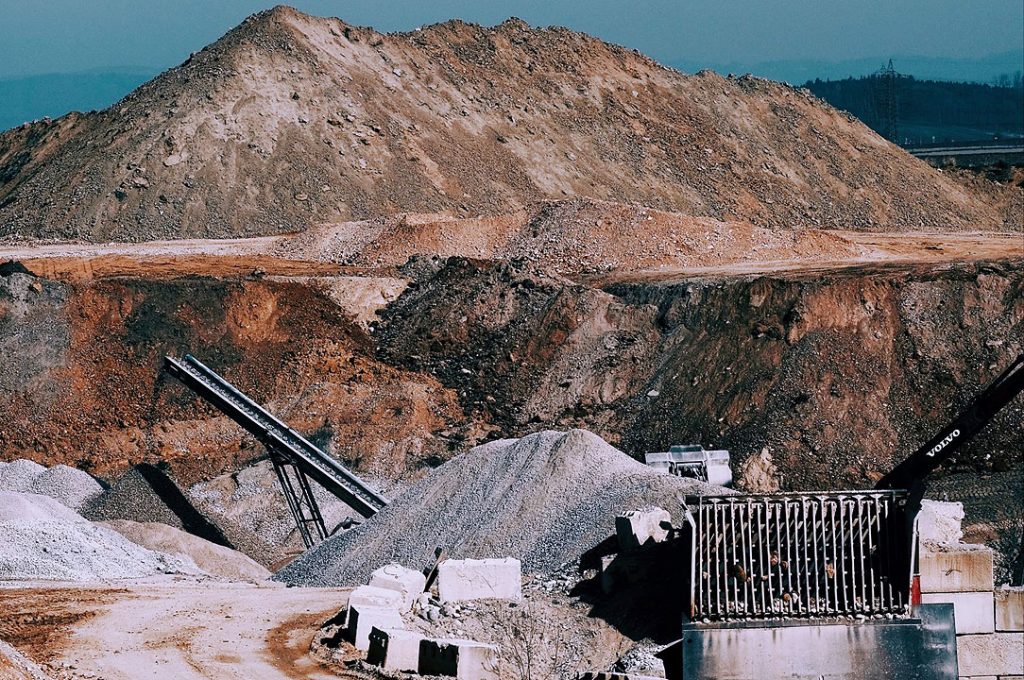




Monthly Economic Update: One for the road
 DOWNLOAD
DOWNLOAD

Inflation Update: Still low, still slow
 DOWNLOAD
DOWNLOAD

Philippines Trade Update: Exports momentum continues
 DOWNLOAD
DOWNLOAD


Metal production rises 4.8% by value in 2023

Philippine metal production by value rose by 4.8% in 2023 on improved prices and higher output, data from the Mines and Geosciences Bureau (MGB) showed.
In a report, the MGB said the value of production reached PHP 249.05 billion in 2023, up by 4.8% from PHP 237.66 billion in 2022.
Gold accounted for nearly half of the total production value or PHP 106.64 billion, a 17% increase from PHP 91.05 billion in 2022.
Nickel ore was valued at PHP 65.84 billion, up by 7% from a year ago.
Together, nickel ore and other nickel byproducts were valued at PHP 113.37 billion, accounting for 45.52% of the total production value, while copper was valued at PHP 25.41 billion (10.2%), and the combined output of silver, chromite, and iron at PHP 3.63 billion (1.46%).
The average price of gold increased by 7.8% year on year to USD 1,942.8 per troy ounce, while the price of silver went up by 7.85% to USD 23.47 per troy ounce.
Nickel ore prices fell to USD 9.93 per pound last year from USD 11.86 in 2022, while prices of copper slid to USD 3.85 per troy pound last year from USD 4 in 2022.
In terms of volume, gold output jumped by 7% to 31,046 kilograms in 2023 from 29,036 kilograms in 2022.
“The re-entry of Greenstone Resources into the production scene this year has also raised production. Said company has been under care and maintenance status since 2018,” the MGB said.
Greenstone produced 201 kilograms of gold with an estimated value of PHP 680 million last year, it added.
On the other hand, silver production dropped 18% to 46,160 kilograms with a value of PHP 1.86 billion in 2023.
“Out of 12 mining projects that reported silver production, only Philippine Gold Processing & Refining Corp. and Itogon-Suyoc Resources enjoyed increased mine output while all the rest suffered production shortfall,” the MGB said.
Copper and iron ore production both went up by 3% to 266,532 dry metric tons (DMT) and 78,213 DMT, respectively.
Chromite production increased by 17% year on year to 101,960 DMT, while nickel direct shipping ore rose by 19% to 35.14 million DMT.
“As a short-term outlook, the performance of the minerals sector will always be dictated by prices and price behavior, (which) will naturally depend on the world supply and demand patterns this year and into the next,” the MGB said.
The MGB noted that supply was affected by cuts in production and shortfalls arising from geopolitical conflicts, rising fuel prices and weather conditions.
“The entry of new players or the expansion of existing projects will also be a big factor. While demand is shaped by how robust or weak the global economy in the construction, and manufacturing sectors will be,” it added.
The MGB said there were several new players in the production scene last year, such as Gran Consolidated Mining, Inc. in Davao de Oro, ARC Nickel Resources and Hallmark Mining Corp. in Davao Oriental, and Kafugan Mining, Inc. in Surigao del Sur.
Out of the 9 million hectares identified to have a high mineral potential, only 751,432.75 hectares are covered by mining tenements, excluding those with local government-issued permits, it added.
“Only about 8.35% of the 9 million hectares considered to be highly mineralized areas are covered by mining tenements… The Philippines is one of the nations with the greatest mineral endowment, having an abundance of nickel, gold, copper, and other valuable minerals,” the bureau said.
Sought for comment, Rizal Commercial Banking Corp. Chief Economist Michael L. Ricafort said the rise in global mineral prices has helped lift the value of Philippine metal production.
“This may be attributed to record-high world gold prices recently, some pickups in copper and nickel prices in recent weeks, as well as some pickups in iron ore prices in most of 2023 amid continued demand for minerals used, especially in electric vehicles and for renewable energy,” Mr. Ricafort said in a Viber message.
He noted the reopening of China, which is the biggest importer of some global commodities, has also supported the growth in mining production.
However, he said a weaker Chinese economy, risk of recession in some countries, and elevated interest rates could hurt demand.
“For the coming months, possible Federal Reserve rate cuts later in 2024 that could be matched locally would help reduce borrowing costs, which could lead to some pickup in the global economy in terms of trade, investments, and other economic activities and somewhat support the pickup in demand for metals and other minerals,” he added. — By Justine Irish D. Tabile, Reporter
This article originally appeared on bworldonline.com





 By BusinessWorld
By BusinessWorld